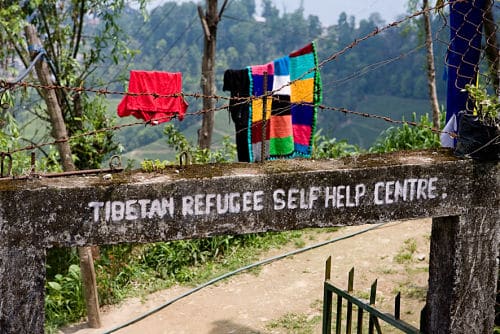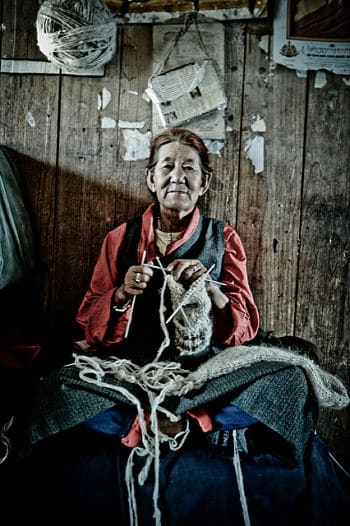Since the 1950s, there has been a continuous flow of Tibetans fleeing across the Himalayas, seeking refuge in exiled communities in Nepal, India and around the world. While accurate figures are limited in nature, the Central Tibetan Administration suggests that of the six million ethnic Tibetans around the world, only two million remain in Tibet, or what is now referred to as the Tibetan Autonomous Region. This exodus has continued against a backdrop of persistent human rights violations including cultural, religious and political oppression, forced internal displacement, arbitrary detention and torture in prison, limited (and discriminatory) access to education and employment opportunities, and an assortment of Orwellian surveillance practices. The combination of these policies and practices have been argued by some, including the Dalai Lama, to amount to cultural genocide.
Unlike other border zones, the Tibet-Nepal border and the thousands of border crossings that have occurred in the region remain relatively unexamined. Central to the Tibet-Nepal border is the international Protocol against Smuggling of Migrants by Land, Sea and Air (2000) and the concern of states to criminalise and undermine people smugglers. This protocol frames people smugglers as facilitators of illegal border crossings, a perspective justified by the associated rhetoric perpetuating the image of migrants as exploited and vulnerable. By examining the experience of irregular Tibetan migrants on the Tibet-Nepal border, we can recast the assumptions that underpin this response.
The story of Dorjee
Dorjee (not his real name), a former monk, spent four years in prison for participating in the 1988 national uprising in Tibet. After his release, he continued his political activism and started organising group discussions about the impact of Chinese policies, collecting and distributing speeches from high profile activists in India and the Dalai Lama, and conducting lessons on Buddhism and Tibetan history for young Tibetans. Following the arrest of some of his colleagues for participating in the same activities, he decided to flee to India in 1993. Dorjee went into hiding, moving around the city with the support of friends (who were often in high places) until he could arrange to get out of the city and find a guide that would help him cross the Himalayan mountains to Nepal.

Dorjee’s story is not unique. Ex-political prisoners and political activists driven by the fear of imprisonment (and their treatment in prison), as well as Tibetans seeking access to education and employment, continue to make their way across the highest mountain range in the world. The border region where many Tibetans attempt to cross into Nepal is approximately 7,544 feet above sea level, and the Nangpa La Pass – an ancient trade route between Nepal and Tibet that is now rarely used – is over 19,000 feet above sea level. In addition to the physicality of the Tibet-Nepal border, the region is also a heavily controlled area. This means that those trying to escape also have to navigate the multiple checkpoints and border guards stationed along the border to prevent Tibetans from leaving.
An event that illustrates the danger occurred in 2005, when mountaineers recorded the murder of Kelsang Namsto, a Buddhist nun who was shot and killed by border guards while attempting to flee Tibet. Since then, there has been significant Chinese investment into the Nepal border security efforts, with the forced repatriation of Tibetans playing a key part of the strengthened economic and political relationship between Nepal and China. As the securitisation of this border region has continued, and the enforcement mechanisms gradually expand into neighbouring Nepal, the risks Tibetans face in trying to leave are increasingly higher.
Guide or People Smuggler?
Whether it is the lack of information about border crossings, or the limited access to legal (or regularised) migration channels, the barriers to mobility are fundamental reasons for the emergence of a ‘people smuggling’ market. Outside official government policy and rhetoric, the term ‘people smuggler’ has rarely been used in relation to Tibetan guides and their role in facilitating the escape of Tibetans to Nepal and India. According to the international legal definition, the guides are engaged in people smuggling. However,
the experience of Tibetans in crossing the Tibet-Nepal border undermines the largely accepted notions of exploitation and vulnerability typically associated with the migrant-smuggler relationship.
This is based on three key features of their migration.

First, Tibetan migrants – particularly those who leave their homes outside the legal channels of migration – require a significant level of agency to navigate both the physical and political barriers present on the Tibet-Nepal border. This agency is inconsistent with the perpetuated stereotype of the ‘exploited or vulnerable migrant’, and extends to the relationship between the migrants and their guides. Personal narratives around this relationship indicate that if there are financial transactions associated with the facilitation of their migration, these are handed over on arrival at the migrants’ destination as opposed to prior to their departure. This is different from some comparative examples where fees are typically paid up front, resulting in a higher level of vulnerability. This feature alone suggests that Tibetans, and irregular migrants more broadly, can and do make sense of the barriers associated with bordering crossings, and in doing so often reconfigure the power-dynamic between them and the smuggler, bringing it back into their own hands.
Second, the role of the smuggler is at odds with national and international characterisations, particularly those associated with exploitation and abuse. Such negative depictions are missing at this border zone, and guides are viewed as vital to migrants’ survival when crossing the Himalayas. Border crossings globally present physical dangers to irregular migrants, and for Tibetans these risks are significant. They risk slipping into glaciers, being trapped under landslides, frostbite and hypothermia. Not far from where people are being smuggled into Nepal, thousands of well-funded mountaineers and hikers are being guided through this territory in the same way to ensure they survive their personal journey to conquer some of the world’s highest mountains. However, for those fleeing Tibet, these risks are exacerbated by the way that borders are securitised, controlled and enforced; when combined with the physicality of the Tibet-Nepal border there is an indisputable need for the skill of a guide to successfully and safely navigate this border site.
Third, access to guides is often arranged in specific support of Tibetans attempting to escape political persecution or poverty, and occasionally at no cost. This appears to set this location and this border crossing apart from the practices that occur in other regions. Amala, a young Tibetan woman who fled Tibet with her younger brothers after their parents died, did not have to pay the guide who helped her cross the border into Nepal. While Amala’s experience is not necessarily the norm, it highlights the culturally relative, non-monetary benefits associated with facilitating migrants’ journeys into Nepal.
Grounded in the nature of Tibetan kinship and community networks, their strong sense of nationalism, and the pervasive knowledge of the human rights situation in Tibet, the ability to support Tibetans in escaping the country could easily be interpreted as a contribution to the continuity and survival of Tibetans as a distinct cultural and ethnic group.
The relationship between Tibetans and their guides is not unique. Tibet-Nepal transits have largely remained in the peripheries of forced and irregular migration research, yet they offer a rich source of data on the variability and also continuity of humanitarian smuggling. This border zone is not the only case that challenges the contemporary stereotype of the ‘exploited and vulnerable migrant’ and the ‘exploitative people smuggler’. By moving beyond the state-driven, criminal categorisations attributed to irregular migrants and people smugglers alike, we begin to see a more nuanced, contextually specific and socially accepted relationship borne from the need to access protection and support for mobility.
The experience of Tibetans and their interactions with guides challenge the state’s criminalisation of people smugglers by demonstrating how guides (and people smugglers) facilitate escape from persecution and poverty into relative safety and security. By shifting our geographic focus, the structures and rhetoric underpinning policy responses to irregular migration begin to dissolve.
Our co-producer openDemocracy offers more food for thought on human smuggling:
- Beyond common-sense notions of human smuggling in the Americas, by SOLEDAD ÁLVAREZ-VELASCO and MARTHA RUIZ
- Smuggling as social negotiation: pathways of Central American migrants in Mexico, by YAATSIL GUEVARA GONZÁLEZ
- The call to become a smuggler, by LUIGI ACHILLI
- Precarious livelihoods in eastern Indonesia: of fishermen and people smugglers, by
- Governing migrant smuggling: a criminality approach is not sufficient, by ANNA TRIANDAFYLLIDOU
- The struggle of mobility: organising high-risk migration from the Horn of Africa, by TEKALIGN AYALEW MENGISTE
- Communities of smugglers and the smuggled, by NASSIM MAJIDI
**********
Featured image (cropped) by Sanjib Mitra (flickr, CC BY-NC 2.0)





